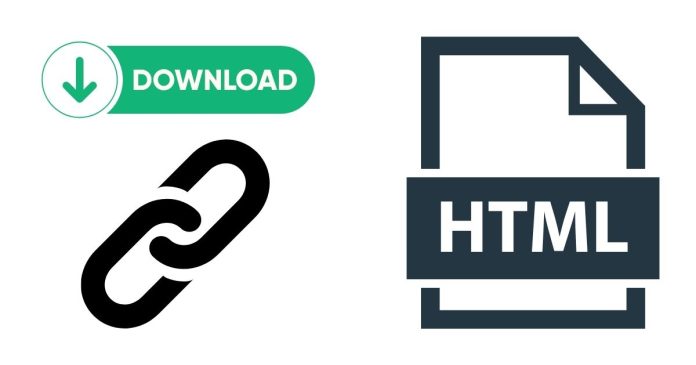Providing users with downloadable files on your website can significantly enhance their experience. Whether you want to share documents, images, or software, HTML makes it simple to create download links. In this blog post, we’ll guide you through the steps to create a functional download link in HTML.
What Is a Download Link?
A download link is a hyperlink that, when clicked, allows users to download a file to their device instead of navigating to a new page. This feature is particularly useful for sharing resources like PDFs, images, or ZIP files directly.
Step-by-Step Guide to Creating a Download Link
Here are the steps to create a download link using HTML:
1. Basic Syntax of the <a> Tag
The <a> (anchor) tag is used to create hyperlinks in HTML. To create a basic download link, use the following structure:
<a href=”file-path” download>Download File</a>
2. Add the href Attribute
The href attribute specifies the file’s location. It can be a relative or absolute path. For example:
- Relative Path:
<a href=”files/document.pdf” download>Download PDF</a>
- Absolute Path:
<a href=”https://example.com/files/document.pdf” download>Download PDF</a>
3. Use the download Attribute
The download attribute tells the browser to download the file instead of opening it. You can also specify a custom filename:
<a href=”files/image.jpg” download=”custom-name.jpg”>Download Image</a>
When the user clicks the link, the file will be downloaded as custom-name.jpg.
Examples
Example 1: Download a Text File
<a href=”files/sample.txt” download>Download Text File</a>
Example 2: Download an Image with a Custom Filename
<a href=”images/photo.jpg” download=”my-photo.jpg”>Download Image</a>
Example 3: Download a PDF Document
<a href=”docs/guide.pdf” download>Download PDF</a>
Tips for Effective Download Links
- Organize Your Files
- Store downloadable files in a dedicated folder (e.g.,
files,docs, ordownloads) for easy management.
- Store downloadable files in a dedicated folder (e.g.,
- Check File Paths
- Ensure your
hrefpaths are correct to avoid broken links.
- Ensure your
- Test Your Links
- Always test your download links across different browsers to ensure they work as intended.
- Add Descriptive Text
- Use clear and descriptive anchor text for your links, such as “Download Report” or “Get the Guide” to improve user experience.
- File Compression
- If your files are large, consider compressing them (e.g., ZIP format) to reduce download time.
Creating a download link in HTML is straightforward using the <a> tag and the download attribute. With just a few lines of code, you can provide users with a seamless way to access files directly from your website. By organizing your files, ensuring proper paths, and using descriptive text, you can enhance the usability and professionalism of your website.
Now that you know how to create download links, go ahead and implement them on your site to improve your users’ experience!


